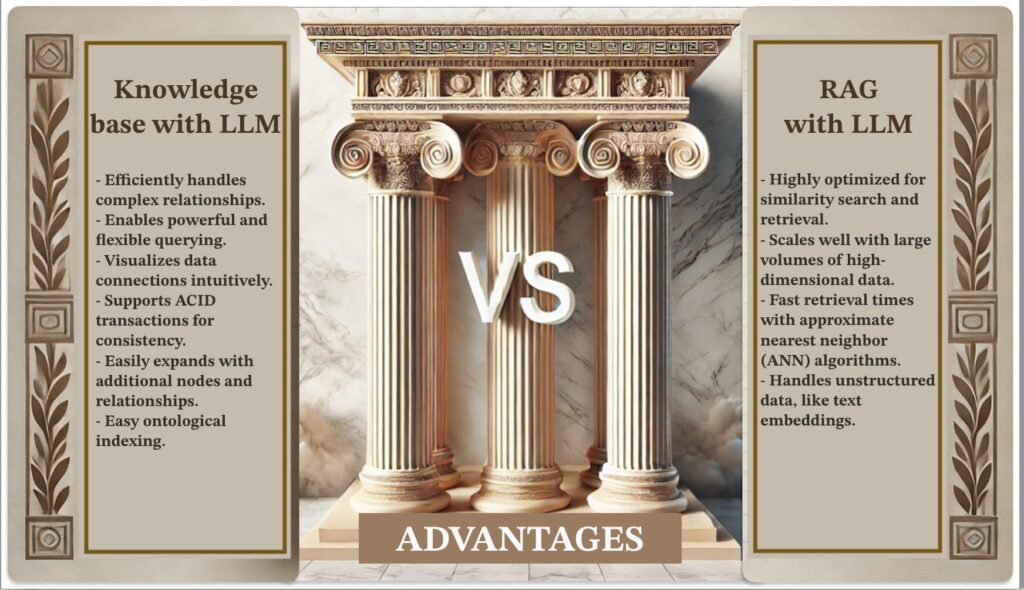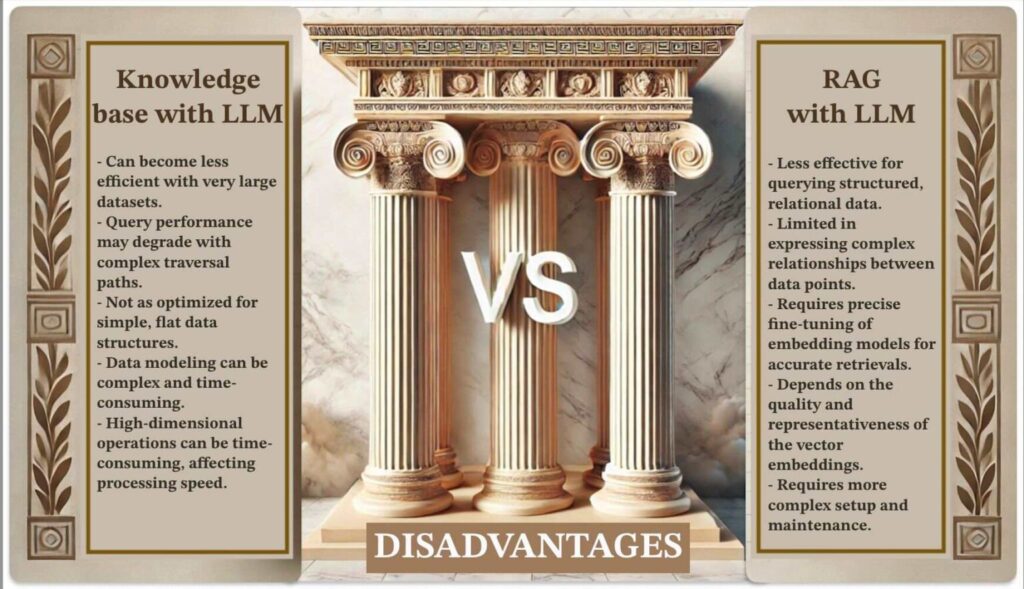5/13 steps to create your own model: Which types of databases?
📅 Published on September 6, 2024
In this multi-part series, we’ll dissect the nuances of two pivotal technologies: Knowledge Graphs and Retrieval-Augmented Generation (RAG). This exploration will span four episodes, starting with theoretical foundations and followed by practical use cases and potential drawbacks.
While Microsoft’s “GraphRAG” is an “open-source” solution combining these technologies, our focus will be on the general concepts of Knowledge Graphs and RAG rather than specific implementations.
I. Understanding Knowledge Graphs and RAG
1. Knowledge Graph
A Knowledge Graph utilizes graph structures to store and query data. Here, nodes represent entities (e.g., people, places, concepts), and edges signify relationships between these entities. This structure excels in capturing and querying complex interrelations within the data, facilitating the extraction of highly contextualized information.
a) Strengths
- Complex Queries: Effective in handling intricate queries that explore multiple relationships.
- Interconnected Data: Ideal for representing data with multiple interconnections.
- Reasoning: Supports advanced reasoning over the relationships among entities.
b) Use Cases
- Semantic Search: Enhances search engines by understanding the relationships between terms.
- Recommendation Systems: Provides contextually relevant recommendations based on user preferences and entity relationships.

2. Retrieval-Augmented Generation (RAG)
RAG integrates information retrieval with text generation using language models. It retrieves relevant data from a database or index (typically a vector database for scalability) and uses this data to generate contextually enriched responses.
We emphasize RAG implementations using vector databases, which offer scalable and efficient data retrieval. Non-vector-based RAG systems, such as those relying on simple document stores, may not scale effectively and are thus not covered here.
a) Strengths
- Contextual Enrichment: Combines retrieved data with generative models to produce nuanced responses.
- Scalability: Vector databases enable efficient handling of large datasets and rapid retrieval.
- Flexibility: Adapts to a variety of data sources and structures.
b) Use Cases
- Customer Support: Provides detailed, contextually relevant answers based on user queries.
- Content Creation: Assists in generating content by incorporating information from diverse sources.

II. Which technology is better?
The effectiveness of Knowledge Graphs versus RAG depends on the context, use case, and data structure. Each has its advantages:
- Knowledge Graphs: Superior for applications requiring deep relational insights and complex querying capabilities.
- RAG: Best for scenarios where scalable, contextually enriched responses are needed from large datasets.
In some instances, integrating both technologies may be beneficial to leverage their combined strengths.
- Graph databases: Ideal for extracting correlations and creating relationships from raw data.
- Open-source technologies: Be cautious with specific open-source solutions due to potential confidentiality issues.
Stay tuned for the next episode where we delve deeper into practical implementations and the pros and cons of these technologies.
